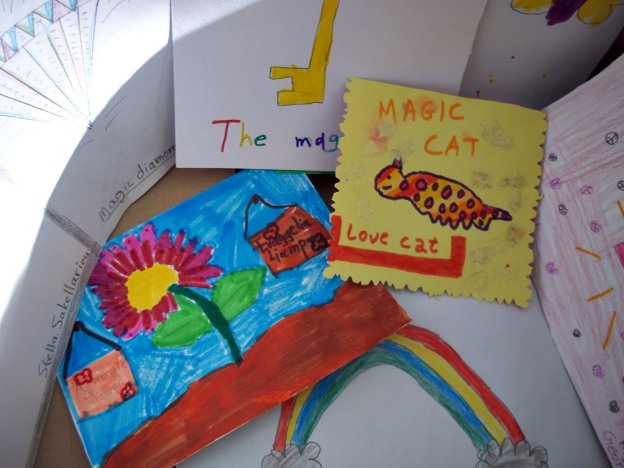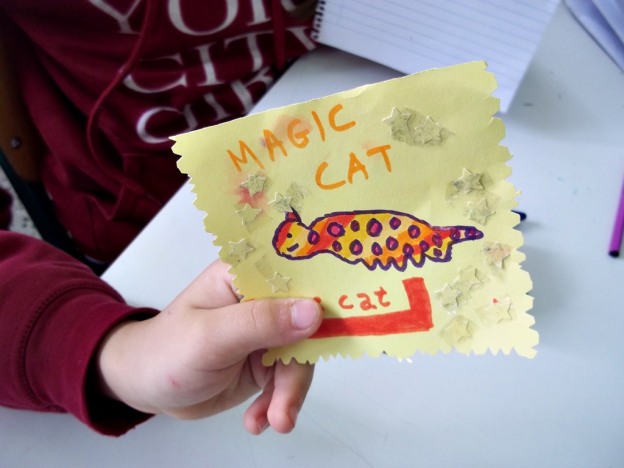
Research Says: The benefits of using games in the classroom are various. they “range from cognitive aspects of language learning to more cooperative group dynamics.” Games also lower the affective filter and encourage “creative and spontaneous use of language,” promote “communicative competence.” What’s more—games are fun.
Treasure hunts (aka scavenger hunts) can be arranged in a variety of ways, and so they are suitable for any level.
Here’s one of the things I do, with my junior classes :
I bring a “Magic Box ” in class and ask my students to fill it in, with …”magic things”!
They make their own word cards, with their favorite “magic items ” on . They are asked to draw items, based on vocabulary studied.
I hide these vocabulary cards around the room and use verbal, visual or audio clues, to direct the students to where the cards are. (They can only keep the card if they can name the item, or pronounce/spell what’s on the card correctly). I generally only let one student loose at a time to prevent scrapping !…
I love working on Treasure hunt games, with my junior classes, the most.
Of course, as the students progress we can make the treasure hunt (clues etc.) more difficult.


General intrsutions
How to Play
- Students are divided into groups.
- Each group has a list of items/cards to find.
- The rules are explained: Students are to find as many items as they can within an allotted time period. They can find the items in any order, but the team must stay together.
- Inform players of the area of the hunt.
- When the time limit is up, the teams meet at the designated spot.
- Each group responds with their card item spelling/definition/ etc.
- If they do it right, the team is awarded one point.
- The team with the most points wins.
How to Make It
- First, prepare the list or cards of items to find
- Make sure the items can be “found” in the area that you have the scavenger hunt.
- Select items based on vocabulary studied.
Variations
- Students can each submit a card/item to be found.
- With older students, you can use clues, with a certain part of speech (e.g., adjective or adverb).
- The game concludes after so many cards are found instead of being limited by a certain time frame.


